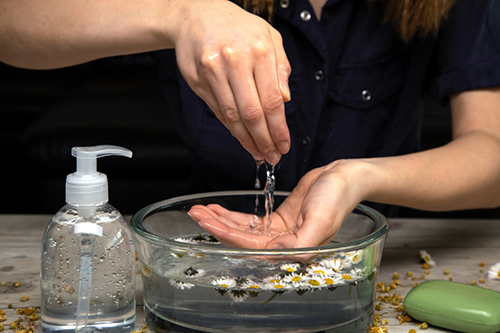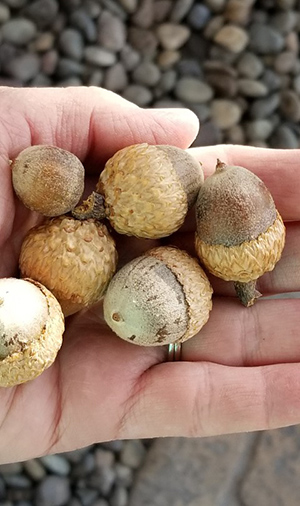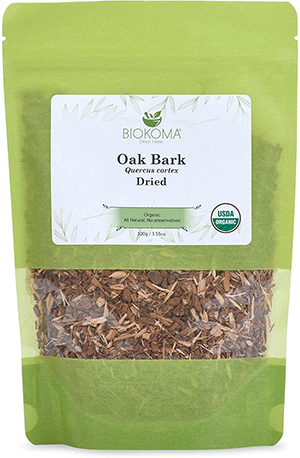Contents
If individuals from developed countries followed a nourishing diet higher in vegetables and not so much in animal products, many of the most common disorders, such as arteriosclerosis, heart ailments, and thrombosis, would drastically decrease.
The acorn is a humble but exquisite meal for those who still have a taste and are not accustomed to sophisticated and artificial modern cuisine flavors. For centuries, acorns, such as the Basques, have been a food for people of great physical strength. In some locations, a sweet acorn is even tastier than chestnuts and may be eaten roasted like the latter.
Oak Tree Scientific Facts
- Scientific Name: Quercus robur L.
- French: Rouvre, chêne.
- Spanish: Roble, carballo.
- Environment: Well-known trees growing in extensive forests in Europe and America.
- Description: This big Fagaceae family tree has a broad crown and a thick, solid trunk. It can grow up to 20 m high and has lobulated, dark-green leaves with a lighter color on the underside. Acorns, its fruits, grow from large petioles hanging from its branches.
- Parts of the plant used medicinally: The bark and the acorns.
Healing Properties
The bark of all trees of the genus Quercus is rich in tannins (up to twenty percent), among which the most outstanding is quercitannic acid. These tannins are astringent; that is, they dry inflamed mucous membranes and precipitate or coagulate the proteins of animal tissues. This is precisely the base for their tanning use: they dry the skin of animals and turn it into leather.
Tannins are the most active astringent agents known. They dry and tighten them momentarily by acting on inflamed tissues, while healthy tissues slowly substitute them. Tannins also have an anti-inflammatory and analgesic effect and stop small surface hemorrhages (hemostatic action).

ACORNS also contain tannins, sugars (carbohydrates), and lipids (fats) with a high biological value. They are astringent and excellent for gastroenteritis caused by diarrhea, especially in children.
The BARK of oak and holm oak trees is applied in external use as a decoction (if taken orally, though not toxic, it may provoke nausea) and has many indications due to its excellent healing properties.
- Stomatitis and pharyngitis—It is applied in rinses or gargles several times daily for oral mucous membranes and throat inflammations. It eases the sensation of itching and stinging and has an antiseptic and cicatrizant effect.
- Conjunctivitis and blepharitis (eye inflammation) – In eye baths or applying a compress soaked in decoction liquid every four hours. Excellent results are achieved in the case of irritating or allergic conjunctivitis and styes.
- Nose hemorrhages – Applied in irrigations or by soaking a gauze to plug the nostril. The combination with tormentil is recommended.
- Chilblains: Take an arm or foot bath three times a day for fifteen minutes with a hot decoction of oak or holm oak tree bark. It will make reddening and skin itching disappear.
- Hemorrhoids and anal fissures – It reduces anal inflammation, stops the slight hemorrhage which usually accompanies these disorders, and favor the cicatrization of the painful anal fissures. It is applied in hot sitz baths for fifteen minutes, once or twice a day, and in enemas.
- Skin sores and eczema—When applied in compresses by soaking a cotton cloth, it dries, reduces inflammation, and heals the skin.
- Ulcerations and sores that have difficulty healing, including vascular-provoked ulcers due to impaired blood circulation in the legs (varicose ulceration), should be treated by applying a compress soaked in the decoction liquid and renewing it every four hours.
- Rheumatic aches – Fomentations or hot compresses with a decoction of oak tree bark have anti-inflammatory and antirheumatic effects. They ease osteoarticular or articular pains in the neck, back, lumbar areas, thighs, and legs. People suffering from rheumatism or arthrosis will benefit from oak tree bark fomentations.
Holm Oak, Cork Oak, White Oak

Besides the Quercus robur L., several trees belong to the genus Quercus, all acorn-producing and have similar medicinal properties. Among them, the most outstanding are:
- Quercus ilex L., smaller in size and called the holm oak tree.
- Quercus suber L., or cork oak tree, from whose bark cork is obtained. Thus, in some Latin American places, it is called corkwood.
- Quercus alba L., or white oak tree, grows in extensive forests in Mexico, the United States, and Canada.
Washing the Yellow Dye
The yellow color that remains on the skin after applying oak tree remedies is caused by the action of the tannins it contains. Rubbing the skin with lemon juice will make this color disappear.
White Oak Bark
White oak bark is the most widely used astringent and is especially good for this purpose. It is used to treat diarrhea, ulcers, and spleen ailments. White oak bark tea is helpful in the treatment of bleeding in the rectum, lungs, and stomach. The bark can also inhibit the spitting up of blood. It can increase urine flow and remove kidney stones and gallstones. To use it for diarrhea, simmer an ounce of the bark in a pint of water for one hour.
A decoction of white oak bark can be used as an injection for hemorrhoids and vaginal infections. Use it to treat prolapsed uterus, nose bleeds, leukorrhea, herpes, and bladder weakness.
The bark can be applied to snake and insect bites, bee stings, and poison oak in external applications. It can also be used as an ointment for sores, wounds, burns, and scabs. In addition, you can apply it to the gums to tighten them, preventing tooth loss. A fomentation of the bark used overnight benefits tonsilitis, thrush, skin diseases, ringworm, pyorrhea, mouth ulcers, leukorrhea, and herpes. Broken capillaries and weak blood vessels can be treated by tying a fomentation over them. Therefore, it is excellent for varicose veins. For varicose veins, use it internally and externally.
A related species in Germany, the English oak, Quercus robur, is approved for the external treatment of inflammatory skin diseases.
WARNING: Avoid use during pregnancy because it can inhibit the absorption of iron and various minerals when consumed internally. People allergic to aspirin should also avoid it. Tannic acid is possibly toxic.
Decoction: Simmer for five to ten minutes and take three ounces as needed. Tincture: Take fifteen to thirty drops as needed. Fluid Extract: Take ½ to one teaspoon as needed. Powder: Take three to ten #0 capsules (15 to 60 grains) as required.
How to use Oak Tree
- Decoction with 60 to 80 grams (around four spoonfuls) of ground oak or holm oak tree bark per liter of water, simmer for ten minutes, then strain and apply it locally on the affected area utilizing any of the following methods.
– Rinses and gargles (for mouth and throat disorders).
– Vaginal irrigations.
– Sitz baths and enemas (for anal or rectum afflictions).
– Arm baths (for chilblains).
– Fomentations or hot compresses (for aching muscles or joints).
– Compresses, soaking a cotton cloth or gauze and renewing it every four
hours (for skin afflictions).
– Eye baths or nose plugs.
DISCLAIMER: All content on this website is presented solely for educational and informational objectives. Do not rely on the information provided as a replacement for advice, diagnosis, or treatment from a qualified medical expert. If you are pregnant, nursing, or have any preexisting medical concerns, talk to your doctor before using any herbal or natural medicines.
REFERENCES
- George D. Pamplona-Roger, M.D. “Encyclopedia of Medicinal Plants.” George D. Pamplona-Roger, M.D. Encyclopedia of Medicinal Plants. Ed. Francesc X. Gelabert. Vols. 1 San Fernando de Henares: Editorial Safeliz, 2000. 208, 209, 210. Print.
- Vance Ferrell Harold M. Cherne, M.D. The Natural Remedies Encyclopedia [Book]. – Altamont, TN: Harvestime Books, 2010. – Vol. Seventh Edition: 7: pp. 184, 185.
- https://www.peacehealth.org/medical-topics/id/hn-2137005

